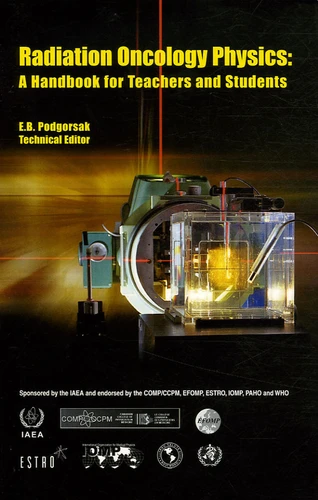Radiation Oncology Physics : a Handbook for Teachers and Students
Par :Formats :
- Paiement en ligne :
- Livraison à domicile ou en point Mondial Relay indisponible
- Retrait Click and Collect en magasin gratuit
- Réservation en ligne avec paiement en magasin :
- Indisponible pour réserver et payer en magasin
- Nombre de pages657
- PrésentationBroché
- Poids1.11 kg
- Dimensions16,0 cm × 24,0 cm × 2,8 cm
- ISBN92-0-107304-6
- EAN9789201073044
- Date de parution01/01/2005
- ÉditeurIAEA
Résumé
This publication is aimed at students and teachers involved in programmes that train professionals for work in radiation oncology. It provides a comprehensive overview of the basic medical physics knowledge required in the form of a syllabus for modern radiation oncology. It will be particularly useful to graduate students and residents in medical physics programmes, to residents in radiation oncology, as well as the students in dosimetry and radiotherapy technology programmes. It will assist those preparing for their professional certification examinations in radiation oncology, medical physics, dosimetry or radiotherapy technology. It has been endorsed by several international and national organizations and the material presented has already been used to define the level of knowledge expected of medical physicists worldwide.
This publication is aimed at students and teachers involved in programmes that train professionals for work in radiation oncology. It provides a comprehensive overview of the basic medical physics knowledge required in the form of a syllabus for modern radiation oncology. It will be particularly useful to graduate students and residents in medical physics programmes, to residents in radiation oncology, as well as the students in dosimetry and radiotherapy technology programmes. It will assist those preparing for their professional certification examinations in radiation oncology, medical physics, dosimetry or radiotherapy technology. It has been endorsed by several international and national organizations and the material presented has already been used to define the level of knowledge expected of medical physicists worldwide.

